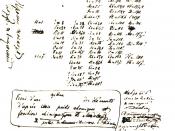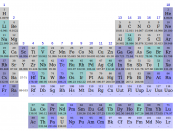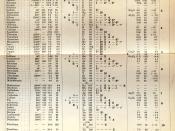Essay - The Development of the Modern Periodic Table Rosie Purchase
In 1817, a German scientist called Johann Dobreiner published his idea, the law of triads. These triads were an early attempt of organising the chemical elements. Each triad was a group of three elements that were specifically placed together due to their similar properties, appearance and reactions. He created 6 triads, of which some examples are: lithium, sodium and potassium, and chlorine, bromine and iodine.
At this time, scientists had begun to find out the relative atomic masses of each element. Dobreiner showed that in each of his triads the mean average of the lightest and heaviest element was close to the atomic weight of the middle element. A pattern was emerging in his law, but not enough elements fit into these triads therefore this meant that he could not substantiate his hypothesis and his findings were regarded at the time as simply interesting curiosities.
Other scientists were also working on discovering relationships between elements, however inaccurate values of what was referred to as the 'atomic weight' prevented them from seeing an overall relationship.
A few decades later, an English scientist named John Newlands came up with his own concept of the periodicity of the elements. He arranged all known elements in the order of their ascending atomic weight. In doing so, he found what he believed to be a pattern every eight element in his grouping shared a resemblance and shared similar properties. Then the suggested analogy similar to the intervals of music, the 'law of octaves' was the name assigned to this pattern. His published concept - 'law of octaves' - was controversial at first and was labelled as an eccentric notion unworthy of serious consideration, but later it became recognised as an important simplification within...


